Academic LISTENING Module
Description
IMPORTANT: Any poor spelling or grammar mistake will be penalised. Then your answer will not be marked.
There are 40 questions
You listen to four recordings of native English speakers and then write down your answers to a series of questions.
- Recording 1 is a dialogue between two people in a common social situation.
- Recording 2 is a monologue set in a real-life social setting, such as a discussion about local services.
- Recording 3: An instructional or training conversation between up to four persons, such as a university lecturer and a student discussing an assignment.
- Recording 4 - a monologue on a topic of intellectual interest, such as a university lecture.
Type of questions:
- Multiple choice
- A question is followed by three alternative replies, or the beginning of a statement is followed by three different options to finish the sentence.
- You will have to choose the one correct answer - A, B or C.
- Matching
- Candidates are asked to match a numbered list of items from the listening text that correspond to a set of question paper alternatives
- Plan/map/diagram labelling
- You must complete labels on a plan (for example, a building),
- map (for example, a section of a town),
- or diagram (e.g. of a piece of equipment). Answers are often chosen from a list on the question paper.
- Form/note/table/flow-chart/summary completion
- This part is required to complete the gaps in an outline of part or of the whole listening text. Test takers are not allowed to alter the words on the tape in any way.
- It is important to carefully study the instructions since the number of words or numbers they should use to fill in the gaps will vary.
- A form: commonly used to record factual information such as names
- A set of notes: used to summarize any type of information by utilizing the arrangement to demonstrate how distinct elements relate to one another.
- A table: used to summarize information that falls into distinct categories, such as place/time/price.
- A flowchart: used to summarize a process with distinct stages, with arrows indicating the process's direction.
- Sentence completion.
- Test takers must read a set of sentences summarizing key information from the entire listening text or a portion of it. They then use information from the listening text to fill in the gaps in each sentence.
- Short-answer questions
- You must read a question and then write a brief response utilizing information from the listening text.
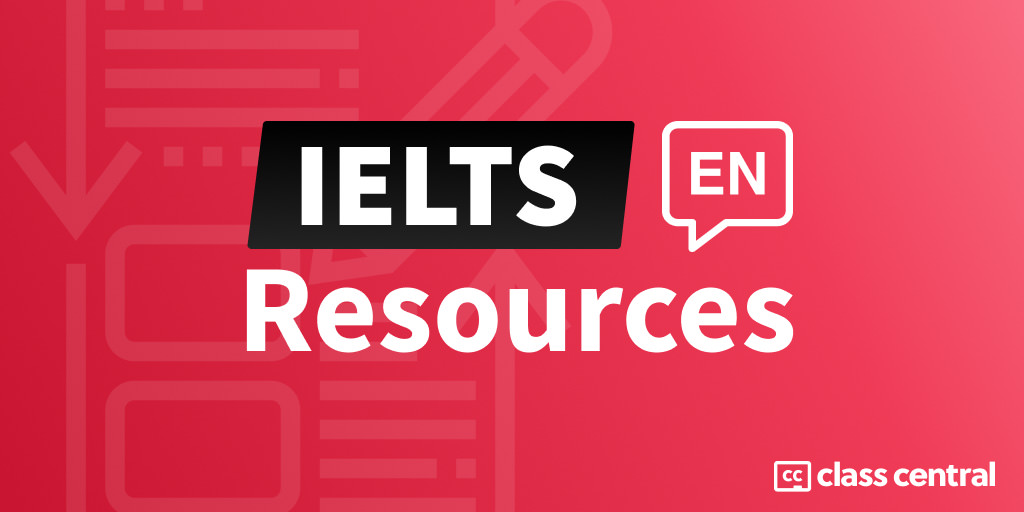
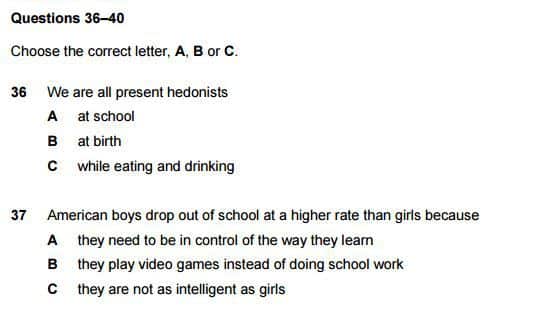

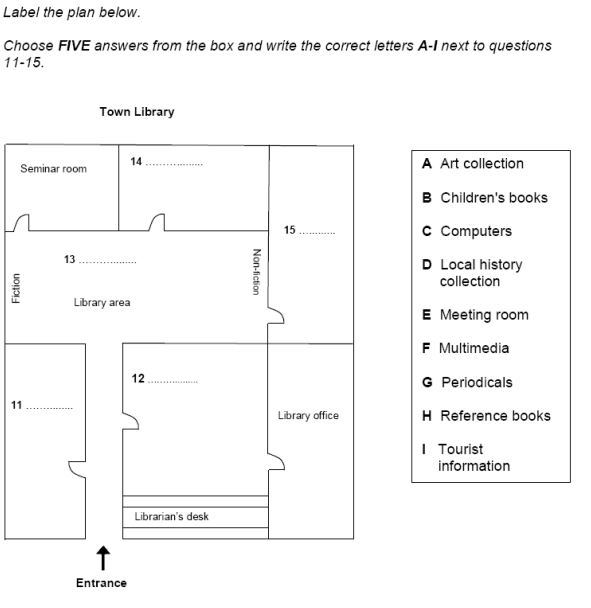
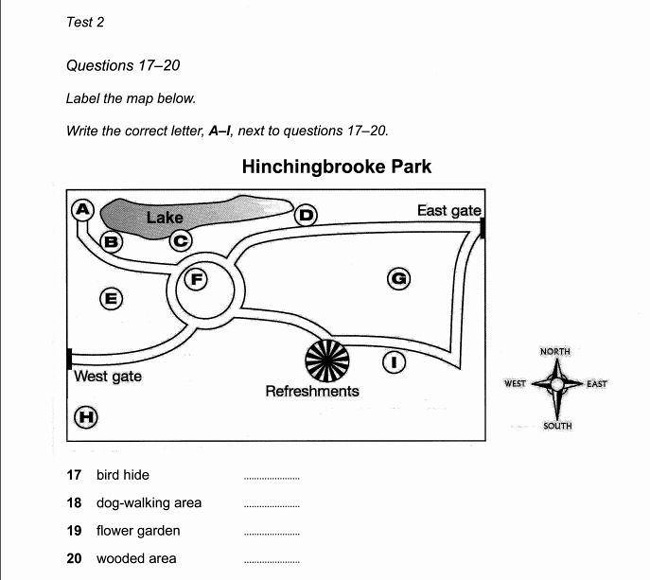
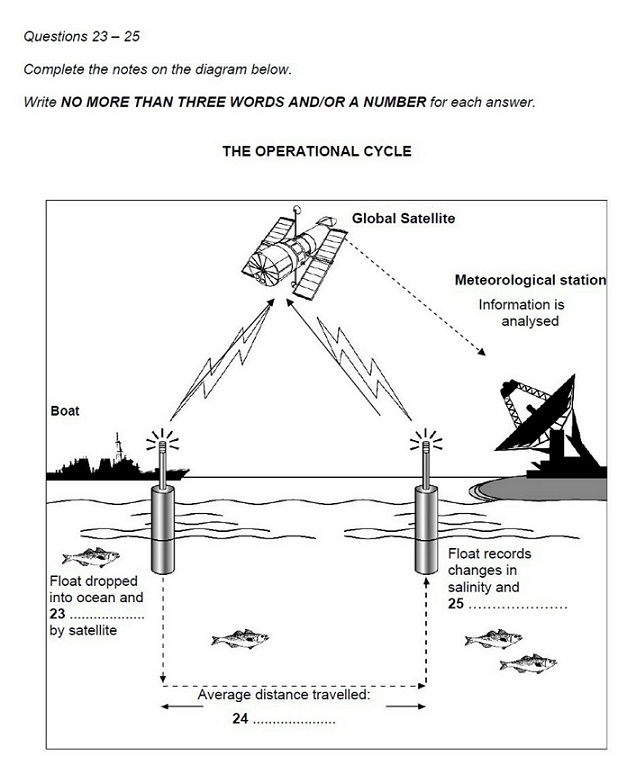




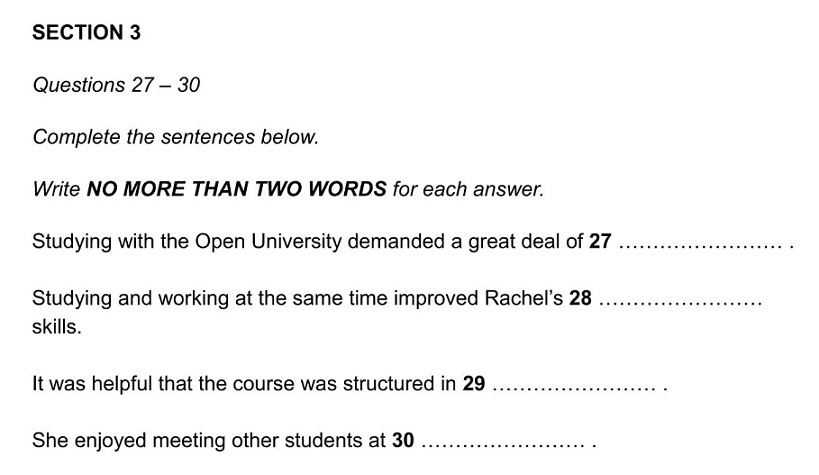
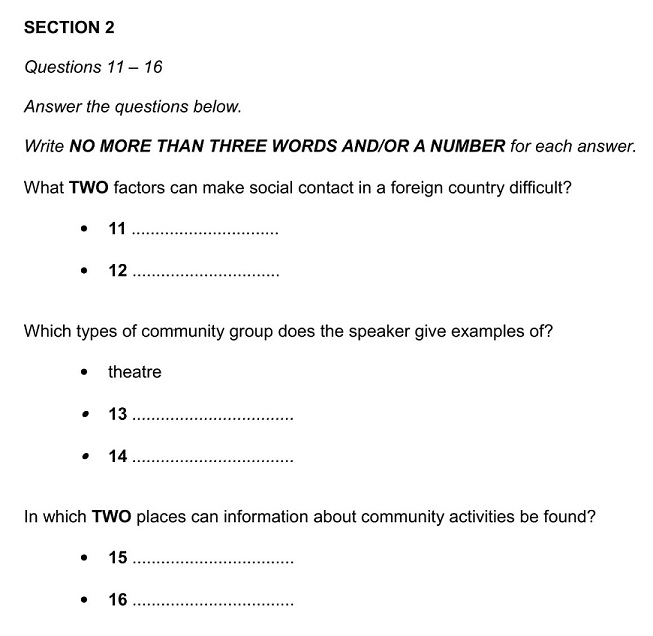
Comentarios
Publicar un comentario